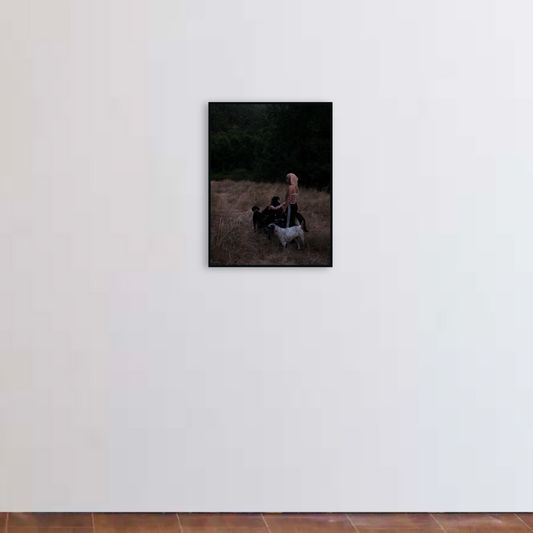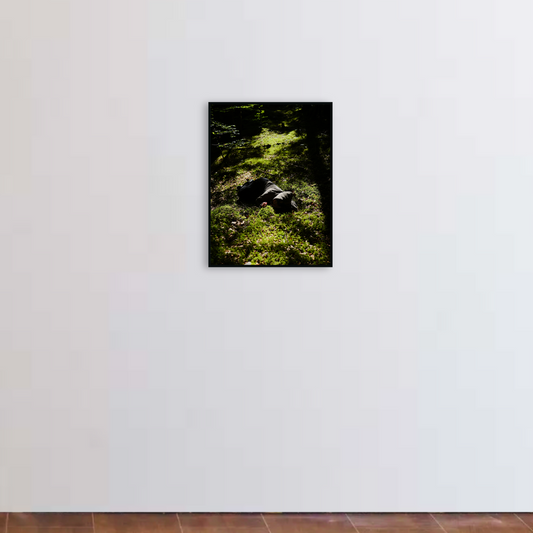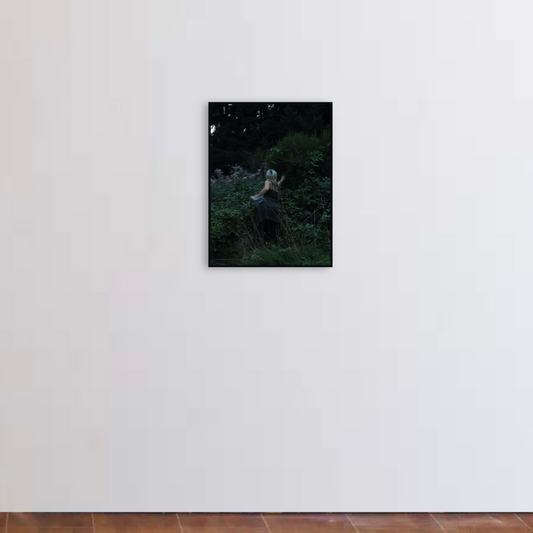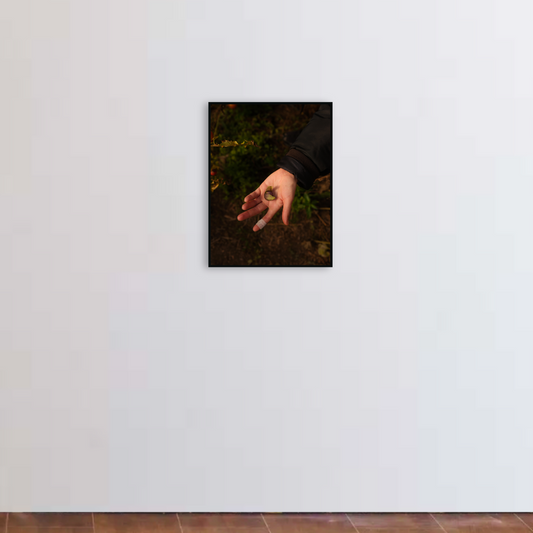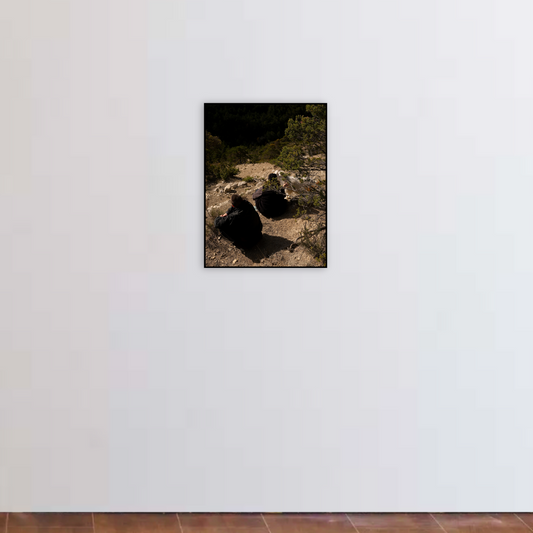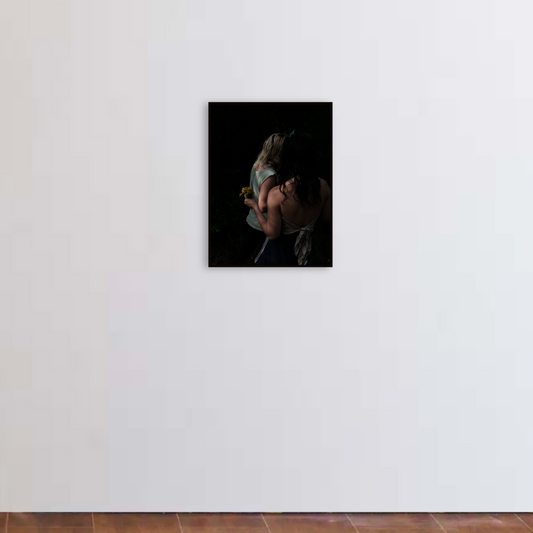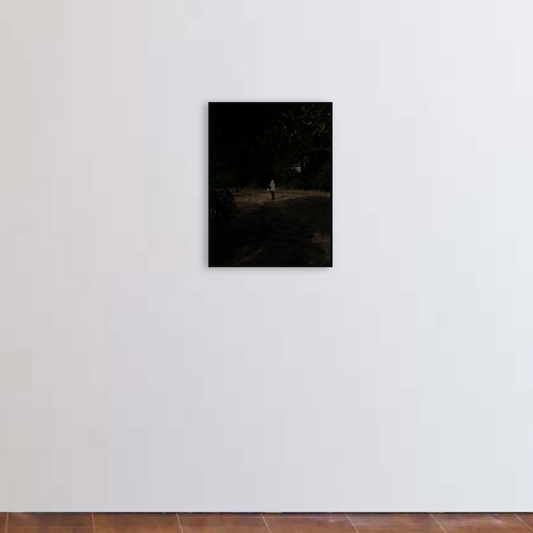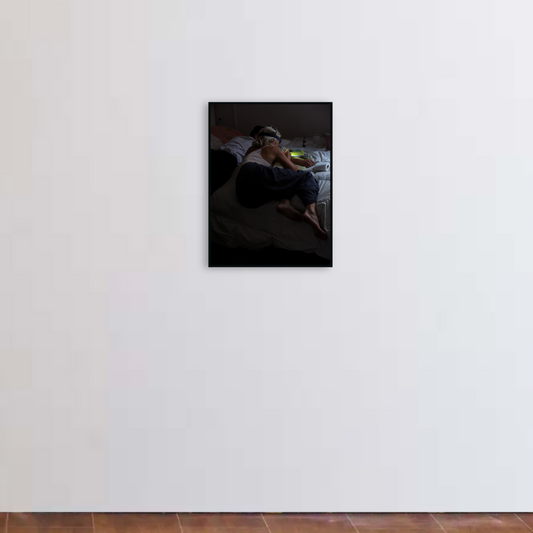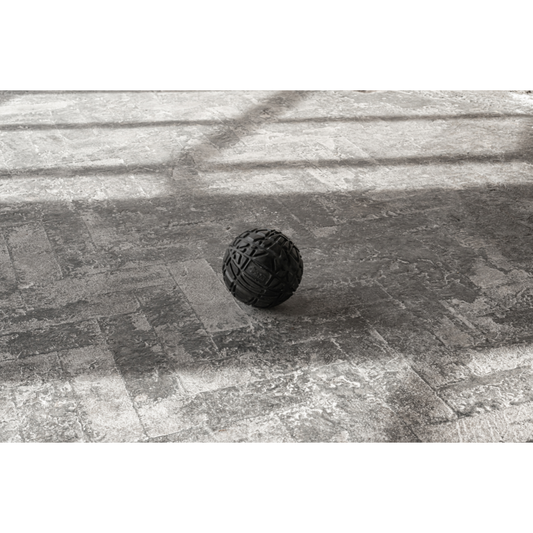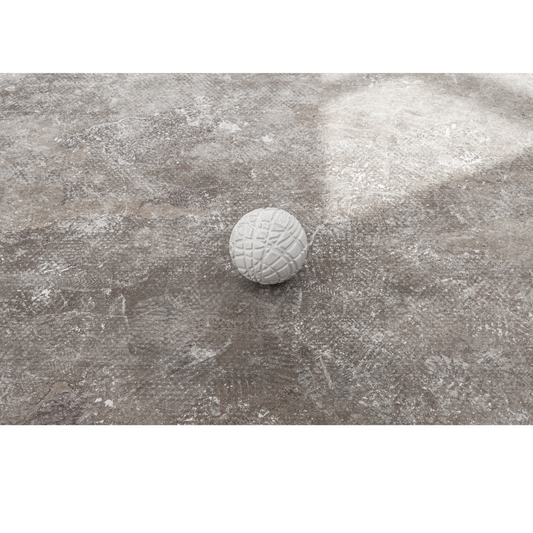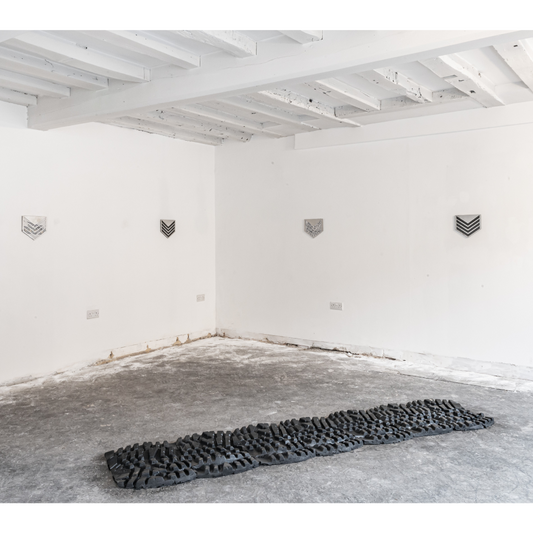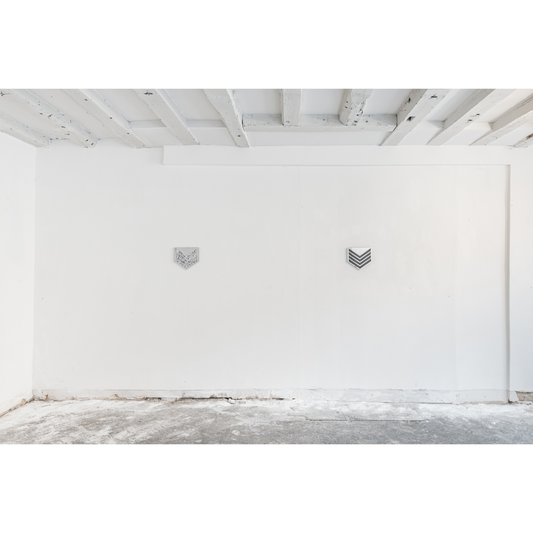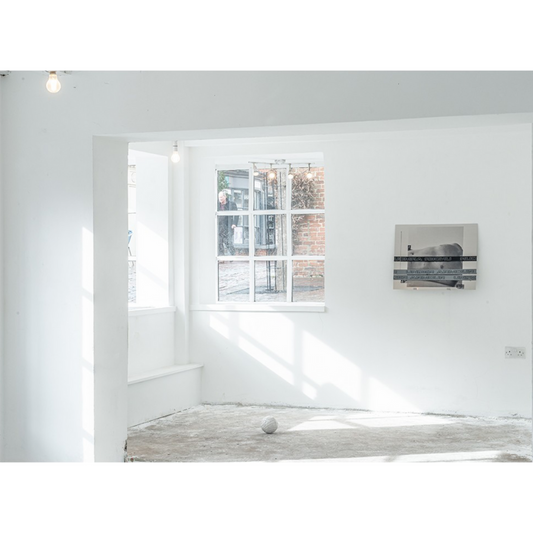Concepts & Exhibitions
L’Envers de l’Endroit (I/II)
Lea Lerma
Works included from exhibitions in London and Marseille.
Synopsis: In Part I/II of Sunend's survey of Lea Lerma's L’Envers de l’Endroit, we examine the lives of a communitas first formed during the COVID-19 lockdown. An abandoned building becomes the site of a micro-utopian experiment, which, following the lockdown, expands into the wilderness and evolves into a spiritual undertaking. Through chiaroscuro, layered spatial dynamics, and fairytale-like imagery, Lerma's lens-based practice investigates themes of autonomy, resilience, and collective belonging. Acts of trust and resistance—such as tattooing—unfold within an aesthetic framework that merges the fantastical and the real. Animals, light, and fragmented compositions emerge as semiotic markers, capturing the group's precarious yet fearless existence. This first part concludes by examining how Lerma’s non-hierarchical process transforms photography into a political act, reimagining freedom and presenting a vision of collective agency that transcends the limits of confinement.
Key references and methodology: This study employs a comprehensive interdisciplinary approach, combining cultural theory, art history, sociology, and ethnographic frameworks to explore Lea Lerma’s lens-based practice and its political underpinnings. Victor Turner’s theory of liminality provides a foundation for understanding the communitas as a group existing in a transitional, non-hierarchical space, while Roland Barthes’ "punctum" highlights the emotional disruptions embedded in Lerma’s imagery. Drawing on Pierre Bourdieu’s critique of kitschy middle-class sensibilities, the essay situates the group’s rejection of societal norms as a form of resistance. Comparisons to Renaissance works, such as Leonardo da Vinci’s The Virgin and Child with Saint Anne, illuminate the structural unity of Lerma’s compositions, while Nikki Sullivan’s exploration of tattoos as both self-expression and communal markers underscores the trust and intimacy inherent in the group’s rituals. The essay also integrates Carles Guerra’s critique of photojournalistic rhetoric to differentiate Lerma’s embedded, unprivileged perspective from traditional modes of representation. Drawing from sociological studies on subcultures (Gelder, 2007), Turner’s exploration of Icelandic sagas, and Wolfgang Tillmans’ notions of free and fearless spaces, the essay positions Lerma’s work within a broader discourse on autonomy, freedom, and precarity. This layered methodology, supported by texts on temporality, symbolism, and micro-utopian practices, frames Lerma’s images as both aesthetic and political interventions, resisting linear narratives and engaging with her communitas’ experience in a fragmented, post-pandemic world. Read
Lisa et Pou, contrôle des tics sur les chiennes, Cevennes, 2020
Inkjet print
Edition 1 of 5
Pou, sieste sur le tapis de mousse, Grenoble, 2020
Inkjet print
Edition 1 of 5
Pou, cueillettes dans les buissons de mures, Lyon, 2020
Inkjet print
Edition 1 of 5
Pou me tendant un des fruits du potager, Drôme, 2020
Inkjet print
Edition 1 of 5
Pou et Mathilde, ascension en compagnie des chèvres, Drôme, 2020
Inkjet print
Edition 1 of 5
Pou et Lisa, cueillant des fleurs sur un bord de route, Cevennes, 2020
Inkjet print
Edition 1 of 5
Pou en chemin pour faire sa toilette à la rivière, Cevennes, 2020
Inkjet print
Edition 1 of 5
Séance tattoo à la lumière de la frontale, Lyon, 2020
Inkjet print
Edition 1 of 5
Echo's Bones (II)
Theo Papandreopoulos
Exhibited at Lion & Lamb Art Space (March 2023)
Farnham, United Kingdom
In Part II/II of this survey of Theo Papandreopoulos's exhibition Echo's Bones, Sunend will further examine Papandreopoulos's key themes through sculpture works made from testosterone powder and assemblage works incorporating military stickers and Nazi uniform trousers. Papandreopoulos's absurd juxtapositions and amplification of specific elements, reveal the tension of deviant eroticism embedded within standardised power structures. The works in this part investigate the role of physical fitness, politics, and religion within military systems and their broader influence on mainstream society, informed by Papandreopoulos's experiences growing up in the Greek Orthodox faith and serving in the Hellenic Army.
Key references and methodology: In Part II of Sunend's survey of Echo's Bones, Papandreopoulos's exploration of masculinity and power is framed through minimalist aural works that evoke the subtle demands of "quiet strength" inherent in middle-class values (Mosse, 1996). Referencing Rousseau’s argument that physical vigour fosters intellectual growth and moral worth (Mosse, 1996), the works also engage with the militaristic ideals of fitness and moral courage, as seen in German Gymnastics. Sunend connects this discourse to the semiotics of military power, where religion and politics historically converge with violence, creating tensions between unequal masculinities (Kovitz, 2003), while reflecting on the fluid and complex nature of male identity, as explored through the works of Beckett and Bacon.
Untitled, 2019
Testosterone and plaster powder
Untitled, 2019
Testosterone and plaster powder
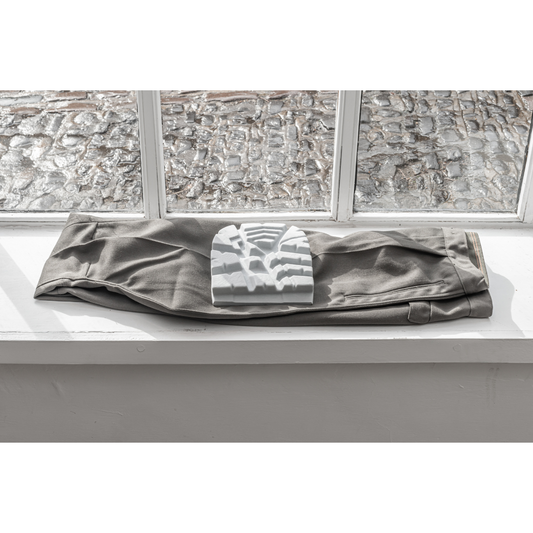
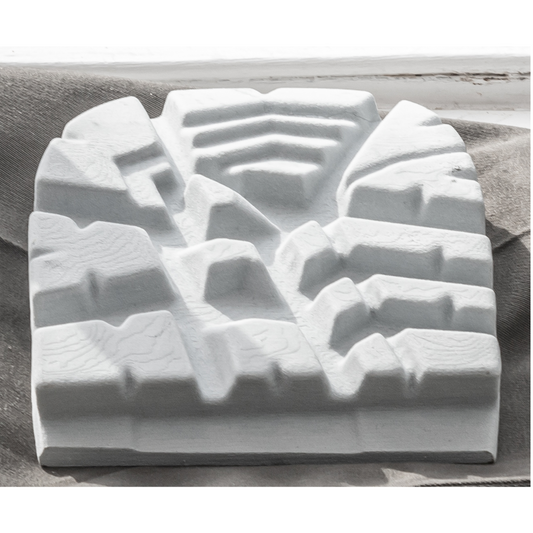
Untitled, 2023
3D printed object on folded genuine WWII Nazi uniform trousers
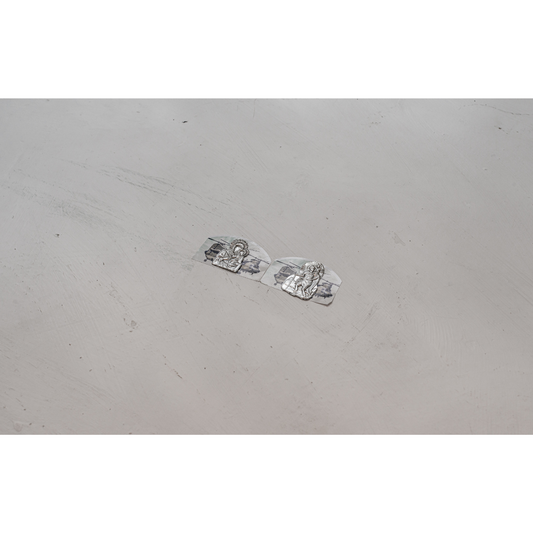
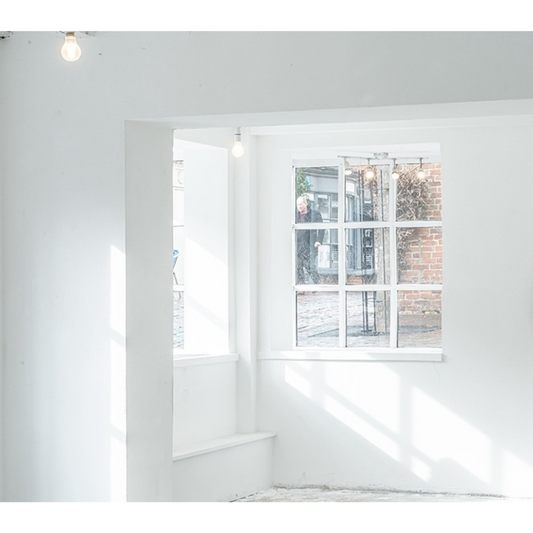
Untitled, 2023
Two silver saints and two military stickers
Echo's Bones (I)
Theo Papandreopoulos
A solo exhibition at Lion & Lamb Art Space (March 2023)
Farnham, United Kingdom
Sunend presents a deep two-part survey of Theo Papandreopoulos's solo exhibition Echo's Bones. In Part I Sunend examines his deconstruction of seemingly banal objects critically engaging with the complex relationship between masculinity and structures of power. This part focuses on his works Dragon Skin (2023) and Untitled (2023)—wall pieces which incorporate military epaulettes—and introduces his curatorial distinction between ‘main’ and ‘supporting’ works by looking at the installation dispersed throughout the gallery. Papandreopoulos re-engineers objects associated with authority and hierarchy through absurd juxtapositions and amplification of specific elements, evoking both menace and vulnerability while revealing the tension of the deviant eroticism embedded within authoritarian standardised uniformity.
Key references and methodology: In Part 1 of Sunend's deep survey of Echo's Bones, the deconstruction of objects is framed through the lens of military masculinity, drawing on Paul R. Higate’s (2003) analysis of rank and hierarchy as central psychological structures in both military and civilian contexts. Papandreopoulos’s works, including Dragon Skin(2023) and Untitled(2023) military epaulette pieces, exemplify the complex interplay between authority and masculinity, as highlighted by his manipulation of scale, form, and weight—a concept discussed in Dawn Ades’s (1996) essay in Hayward Gallery’s “Art and Power.” His re-engineered objects create a tension akin to the "mythic allure" of Francis Bacon’s transformations, as noted by David Sylvester (2000). Rachel Woodward’s (2003) insights into military identity formation inform our understanding of Papandreopoulos’s interrogation of masculinity's boundaries, drawing parallels with Klaus Theweleit’s (1977) concept of the split between the male exterior and female interior. Papandreopoulos’s exposé of the eroticism embedded within authoritarian forms, pushing them into uncanny, unsettling realms, parallels with Tim Benton’s (1996) critique of authoritarian aesthetics. And the eroticism as individual expression as witnessed in Marquis de Sade’s 120 Days of Sodom is described by Jane Gallop (1981). And the tension between individual expression and collective power, as articulated by David Elliot (1996) in “The Battle for Art,” helps to frame Papandreopoulos’s exploration of the contradictions inherent in constructing idealised masculinity. Finally, Com Toibin (2015) essay on Francis Bacon’s late paintings’ “Spirit and Substance” helps us introduce Papandreopoulos’s installation which like his practice is influenced by Samuel Beckett’s absurdism conveyed by paring key elements down to a minimum.
Dragon Skin, 2023
Black polyurethane gun foam casts in 7 parts, rubber, metal button
Untitled, 2023
Aluminium frames, embroidery, white leather and screws
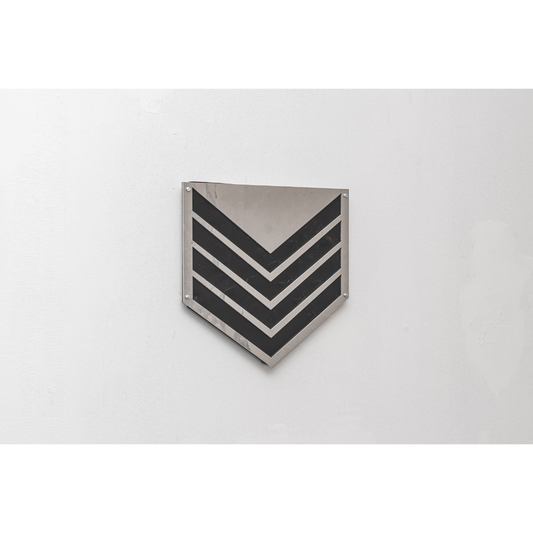
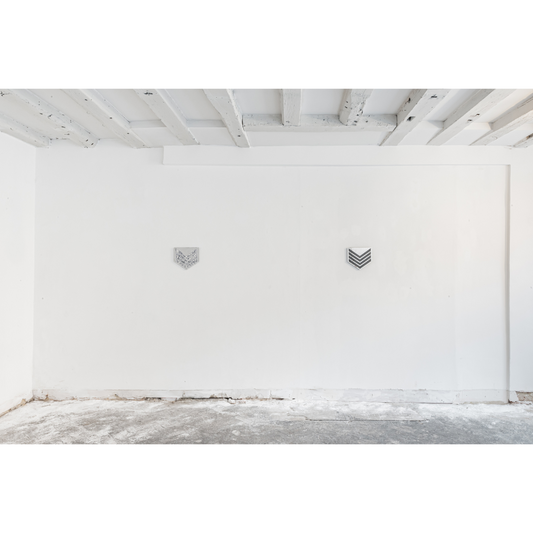
Untitled, 2023
Black embossed leather enclosed between two aluminium frames, and screws
Untitled, 2023
1800 grams of creatine monohydrate powder and metallic army star pins


